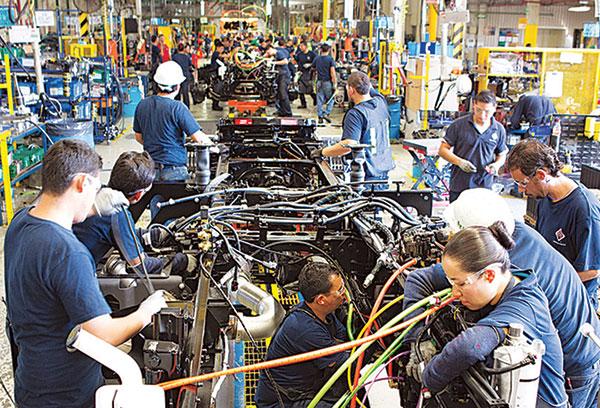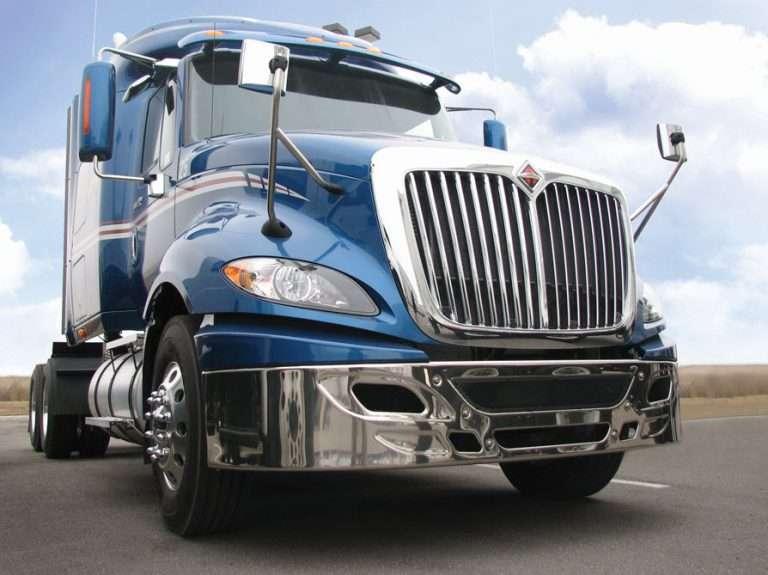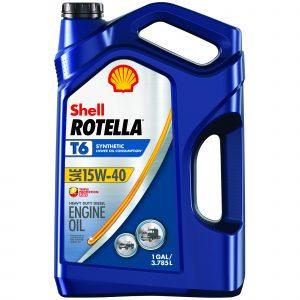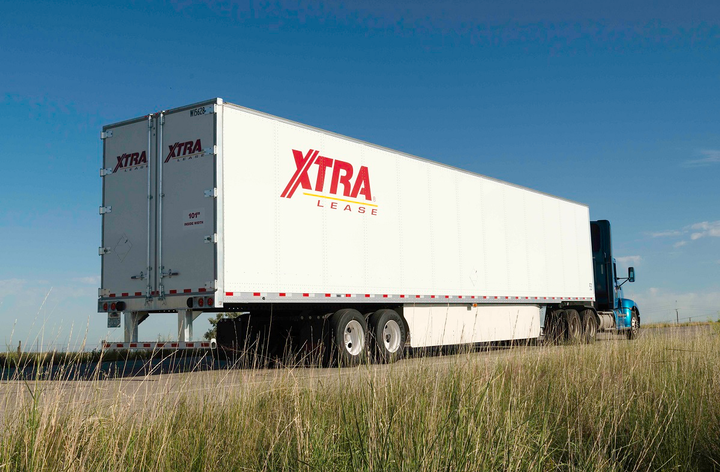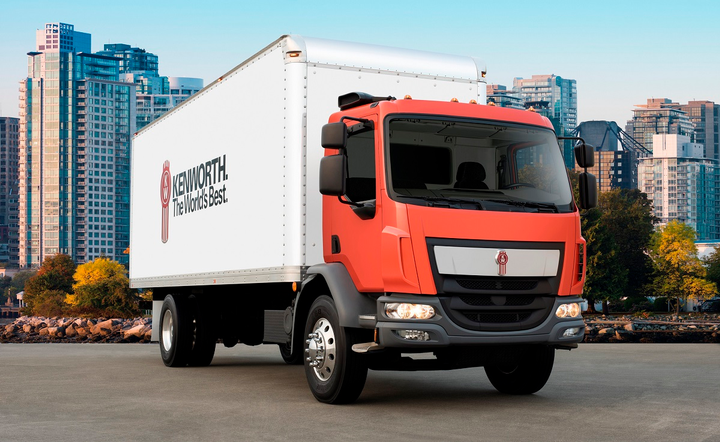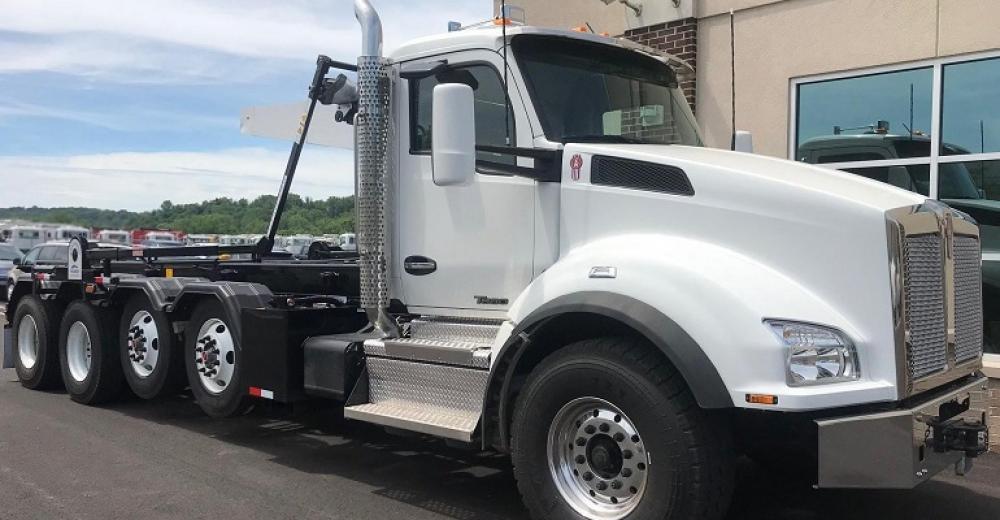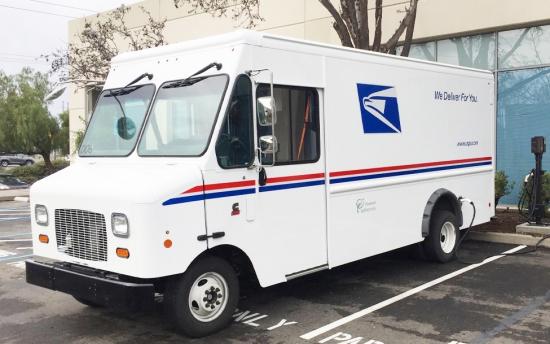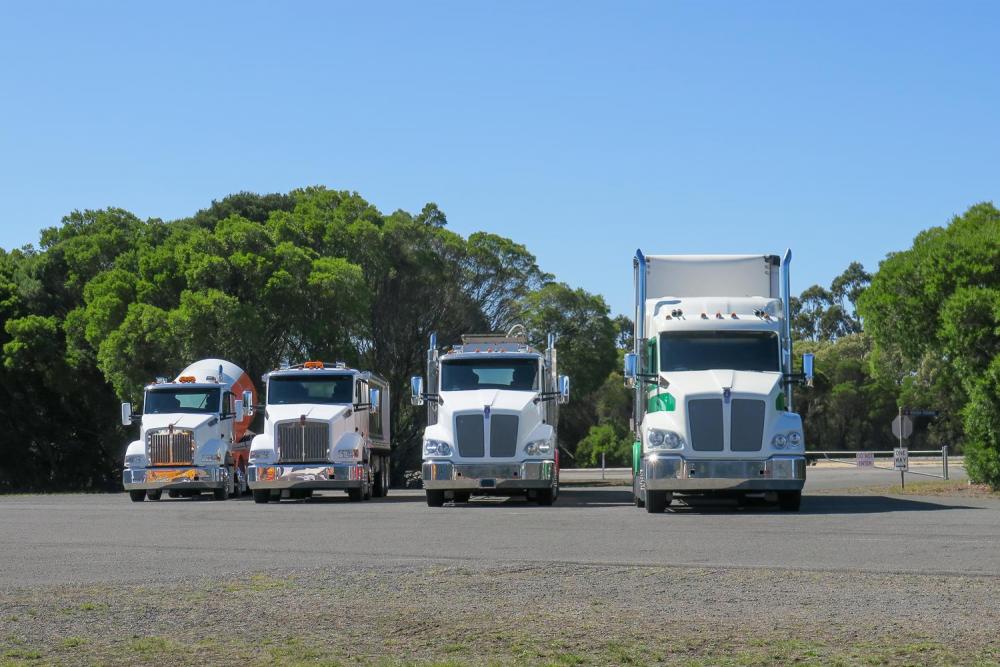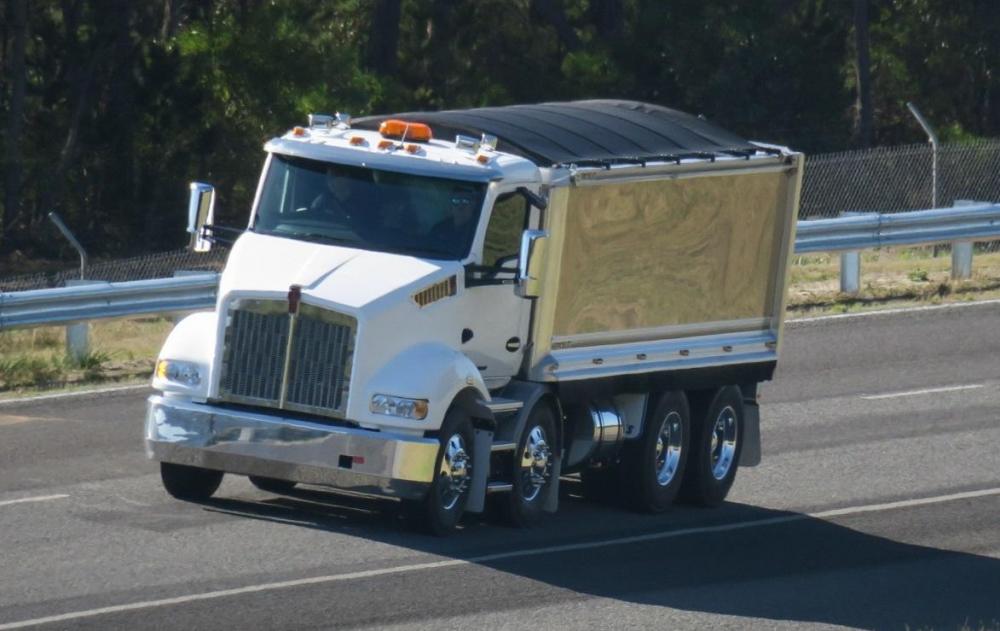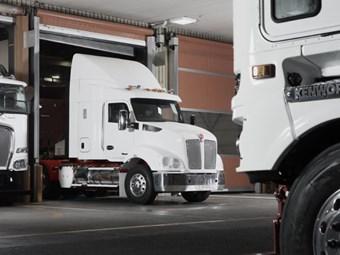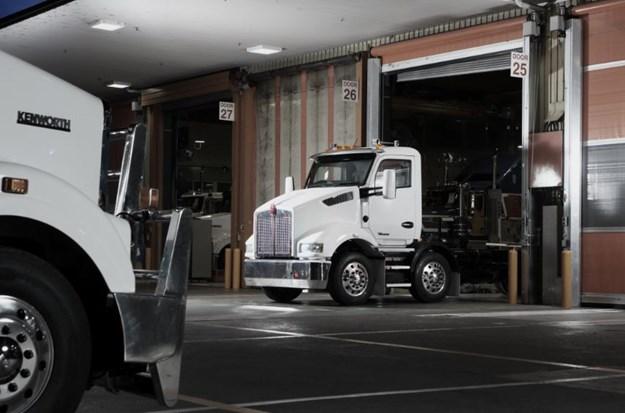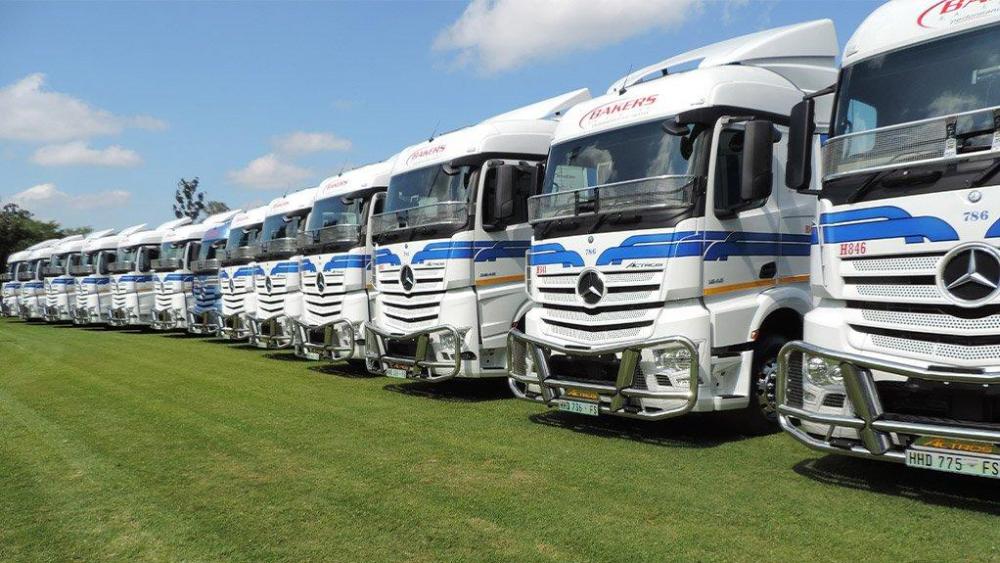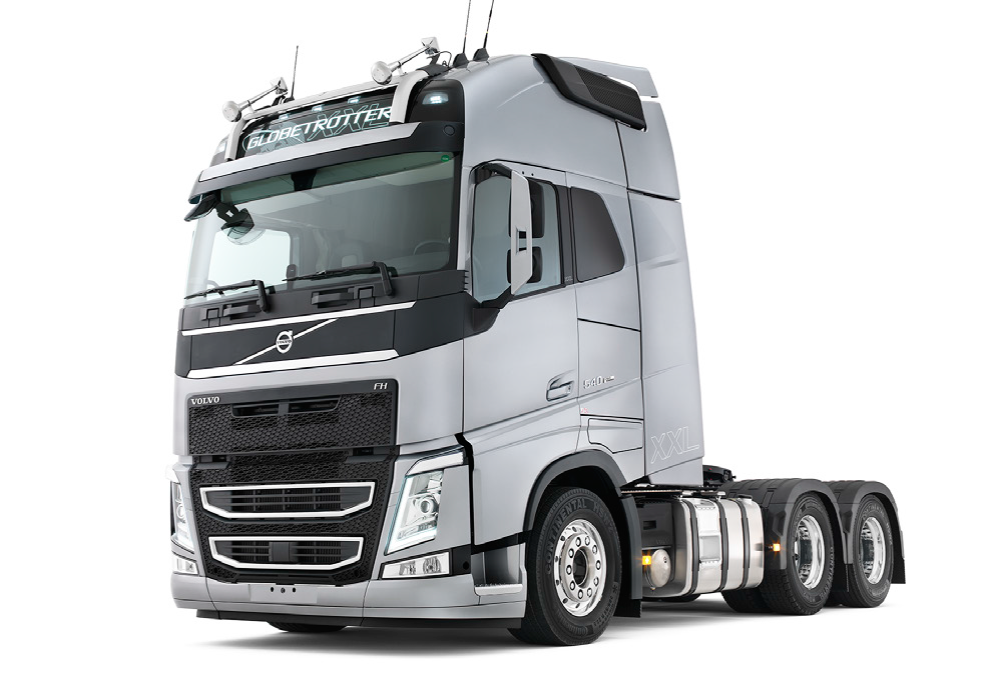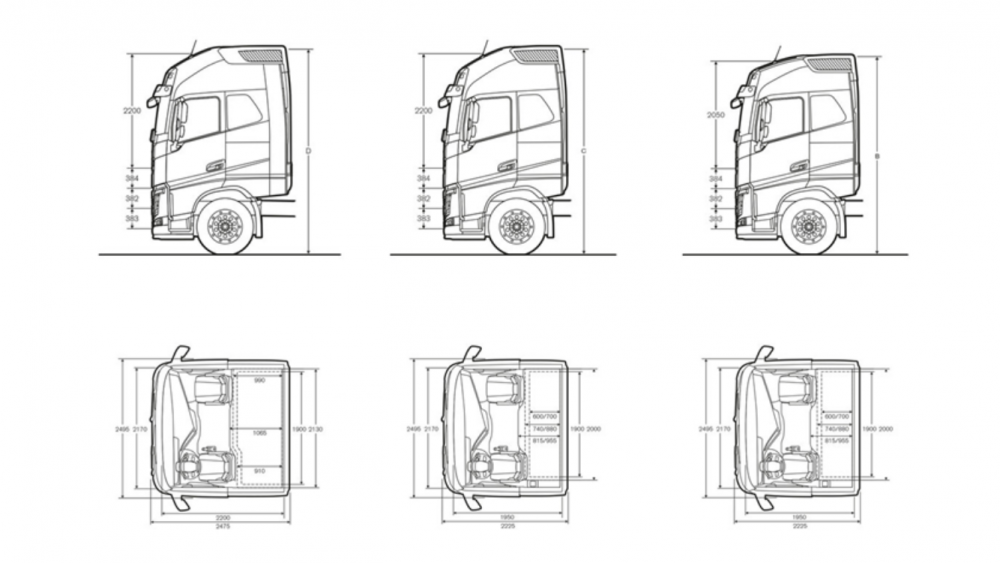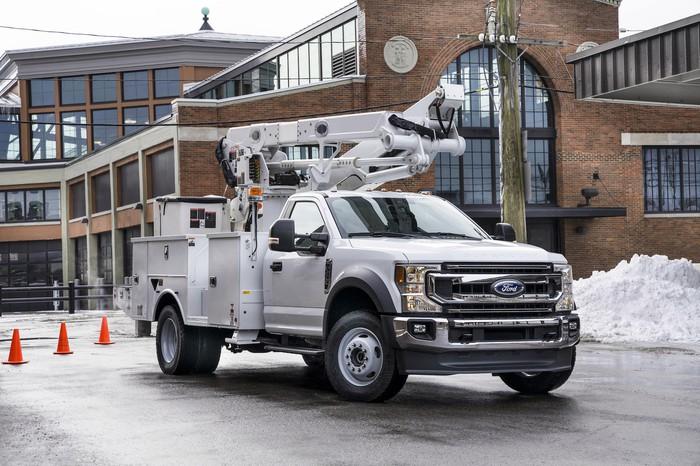
kscarbel2
Moderator-
Posts
18,855 -
Joined
-
Days Won
114
Content Type
Profiles
Forums
Gallery
Events
Blogs
BMT Wiki
Collections
Store
Everything posted by kscarbel2
-
Truck orders fail to hit 20k units for third straight month Jason Cannon, Commercial Carrier Journal (CCJ) / April 3, 2019 North American Class 8 truck orders hit 15,200 units in March, according to FTR – the third consecutive month with order activity below 20,000 trucks. March 2019 was the lowest March order total since 2010, was 8 percent below February and down 67 year-over-year. Another analyst said March marks the fourth consecutive month with orders falling meaningfully below the current rate of build. “Over that four-month period, Class 8 orders have been booked at a 194,000 SAAR, (seasonally adjusted annual rate) compared to a 489k SAAR for the same period a year ago,” “These are extraordinary market conditions. Most fleets ordered well in advance of their need for trucks in 2019,” adds Don Ake, FTR vice president of commercial vehicles. “OEM production slots were scarce in 2018 and supplier constraints caused disruptions in supply, so fleets didn’t want to get shutout this year. Now so many build slots have been reserved, fleets that are currently placing orders for delivery this year don’t have many options.” Class 8 orders for the past 12 months have now totaled 397,000 units. Truck demand is still strong, but with all choice build slots filled for this year, Ake says fleets that need trucks are basically taking whatever is available. Backlogs are also rapidly declining as the market tries to rebalance and establish some semblance of normality. “Even though the economy and freight growth appear to be slowing, it has not impacted OEM line rates as of yet,” Ake says. “Fleets are still putting more trucks in service and competing in a still decent freight market. It is expected that Class 8 sales will moderate sometime before the end of the year, as industry capacity begins to catch up with the freight surge that began in 2018.” Even though demand is a shadow of its 2018 self, one analyst said slowing order intake masks current conditions. “Admittedly, economic and freight growth are slowing, but both are still growing,” he said. “And in the context of retreat from record levels, it is no wonder truck buyers continue to pursue incremental profits, as evidenced by the number of unbuilt units in the backlog.”
-
With build slots scarce, Class 8 orders continue to slow Josh Fisher, Fleet Owner / April 3, 2019 Although the economy and freight growth appear to be slowing, OEM line rates have not been impacted yet. Class 8 tractor orders continue to be sluggish compared to last year’s boom, according to two research firms that track heavy-duty truck sales. Demand is still strong, but supply is limited with all of the choice build slots for 2019 filled. Fleets that need trucks are basically taking whatever is available. Backlogs are rapidly declining, as the market tries to rebalance and establish some semblance of normality. FTR reported this week that preliminary North American Class 8 orders for March was at 15,200 units, remaining below the 20,000 threshold for the third consecutive month. March 2019 was the lowest March for orders since 2010, according to FTR. March orders were 8% below February and down 67% year-over-year. Class 8 orders for the past 12 months have now totaled 397,000 units, according to FTR. Another analyst is tracking slightly higher numbers for March, showing the industry booked 15,700 Class 8 units in March. That is a 6.7% drop compared to it’s February numbers. The March numbers are still preliminary. The analyst’s March numbers are down 66% year-over-year. “March marks the fourth consecutive month of orders meaningfully below the current rate of build. Over that four-month period, Class 8 orders have been booked at a 194,000 SAAR, compared to a 489,000 SAAR for the same period a year ago,” he said. “Even though demeand is a shadow of its former self, slowing order intake belies current conditions,” he added. “Admittedly, economic and freight growth are slowing, but both are still growing. And in the context of retreat from record levels, it is no wonder truck buyers continue to pursue incremental profits, as evidenced by the number of unbuilt units in the backlog.” Don Ake, FTR vice president of commercial vehicles, also noted these extraordinary market conditions. “Most fleets ordered well in advance of their need for trucks in 2019,” he said this week. “OEM production slots were scarce in 2018 and supplier constraints caused disruptions in supply, so fleets didn’t want to get shutout this year. Now so many build slots have been reserved, fleets that are currently placing orders for delivery this year don’t have many options.” Although the economy and freight growth appear to be slowing, OEM line rates have not been impacted yet, Anke said. “Fleets are still putting more trucks in service and competing in a still decent freight market. It is expected that Class 8 sales will moderate sometime before the end of the year, as industry capacity begins to catch up with the freight surge that began in 2018.”
-
Trailer-Body Builders / April 1, 2019 LOUISVILLE, KY. The annual Mid-America Trucking Show continues to miss the shiny steel and chrome of several heavy-duty truck OEMs, but the Kentucky Expo Center still featured plenty of trailer and truck body manufacturers that occupied a decent portion of the 1 million square feet of exhibit space here for the country’s largest show dedicated to commercial vehicles, customers, drivers and suppliers to the industry. The gallery is quick roundup of the trailer and body exhibits; see the May print edition of Trailer/Body Builders magazine for complete MATS coverage. Photo gallery - https://www.trailer-bodybuilders.com/trailers/gallery-trailers-truck-bodies-mats-2019/gallery?slide=1
-
Transport Topics / April 2, 2019 North American Class 8 orders in March fell sharply compared with a year earlier amid continuing, but slower, economic and freight growth, and a heavy backlog, analysts said. One analyst pegged the preliminary number at 15,700, which it will revise later in the month. That was 66% lower than a year earlier when orders were 49,600. “Even though demand is a shadow of its former self, slowing order intake belies current conditions. Admittedly, economic and freight growth are slowing, but both are still growing. And in the context of retreat from record levels, it is no wonder truck buyers continue to pursue incremental profits, as evidenced by the number of unbuilt units in the backlog,” he said. Another analyst said truck makers’ backlogs were full through year-end. “Looking ahead, orders are unlikely to materially change in the coming months,” Credit Suisse analyst Jamie Cook wrote in a note. .
-
Volvo Trucks North America (VTNA) Press Release / April 2, 2019 .
-
Kenworth Truck Co. Press Release / April 2, 2019 .
-
International Trucks Press Release / March 29, 2019 When it comes to your business you need a partner that will maximize your uptime. At International Truck uptime is our priority. .
-
International Trucks Press Release / March 29, 2019 Introducing the Diamond Partner Program. A new way International Truck and truck equipment manufacturers to work together like never before. .
-
Matt Cole, Commercial Carrier Journal (CCJ) / April 2, 2019 An issue that could cause exhaust pipes to detach from certain trucks has prompted Navistar to issue a recall of more than 24,000 International tractors, according to documents from the National Highway Traffic Safety Administration. Daimler Trucks North America is also recalling a small number of Freightliner Cascadia tractors for two separate issues. Navistar’s recall affects approximately 24,173 model year 2016-2020 International LT and model year 2017-2018 International ProStar 73-inch sleeper cab models equipped with exhaust systems with horizontal aftertreatment device and horizontal tailpipe mounted on the right side (feature codes 07BKP or 07BKR). In the affected trucks, the rear exhaust hanger bracket may crack, causing the forward hanger bracket to also crack. If both brackets crack, the exhaust pipe could detach from the trucks. Navistar will notify owners of affected trucks, and dealers will replace the rear exhaust hanger bracket, any front hanger bracket found damaged and any damaged exhaust pipes for free. Owners can contact Navistar customer service at 1-800-448-7825 with recall number 19501. NHTSA’s recall number is 19V-122. DTNA announced it is recalling approximately 43 model year 2020 Freightliner Cascadia tractors equipped with an ICU3S instrument cluster and a DT12 automated manual transmission. In these particular trucks, when the transmission is shifted out of neutral, the instrument cluster will continue to display the “N” position. Daimler will notify owners, and dealers will reprogram the powertrain controller so the correct gear selection displays in the instrument cluster for free. Owners can contact DTNA customer service at 1-800-547-0712 with recall number FL-808. NHTSA’s recall number is 19V-137. DTNA also issued a separate recall affecting just 14 model year 2018-2019 Cascadia tractors in which the anti-lock braking system malfunction warning light may not reactivate after the ignition has been turned off and back on – a violation of federal vehicle safety regulations. The company will notify owners, and dealers will reprogram the ABS module for free. Owners can contact DTNA customer service at 1-800-547-0712 with recall number FL-810. NHTSA’s recall number is 19V-136. .
-
Shell sponsoring new “hyper-fuel mileage” tractor-trailer design
kscarbel2 replied to kscarbel2's topic in Trucking News
Shell adds synthetic Rotella T6, prepping Starship for another cross-country test Commercial Carrier Journal (CCJ) / April 2, 2019 Shell Lubricants has added a full synthetic 15W-40 weight engine oil to the Rotella product line. Introduced at the Mid-America Trucking Show in Louisville, Kentucky, on Thursday, the CK-4 Rotella T6 lubricant improves on previous generation CJ-4 products by extending oil drain intervals and better protecting engines against oxidation, the company says. It also offers improved low temperature flow, Shell notes, for greater engine protection compared to previous products. Though manufacturers set oil drain intervals, most truck makers recommend oil drain intervals of between 50,000 and 75,000 miles for the new CK-4 products, says Megan Pino, global brand manager for Shell Lubricants. The company is also planning another cross-country demo of its Starship concept tractor-trailer, which Shell debuted last year at the Mid-America Trucking Show. The Starship completed a cross-country test run last summer, achieving a fuel economy average of nearly 9 mpg. Shell also touted the Starship’s freight-ton efficiency, a metric of energy use that Shell says is more applicable to freight movement than simply gauging miles per gallon. Read more about the Starship’s 2018 cross-country demo at this link. Pino says the company intends to make tweaks to the Starship to boost mpg and freight-ton efficiency even further. Though no dates are set, the second cross-country test run likely will occur next spring or early summer, Pino says. . -
Heavy Duty Trucking (HDT) / April 2, 2019 Xtra Lease announced that it will invest more than $300 million to purchase over 10,000 trailers in 2019, the largest capital investment made by the company for trailers in a single year. With the purchase of new dry vans, reefers, flatbeds and chassis, Xtra Lease’s fleet will grow to approximately 85,000 trailers. New vans and reefers will be equipped with side skirts, air disc brakes and trailer tracking, free on all rentals and leases. All new vans include a cargo sensor, also a free service. “We invest in new trailers every year to provide the youngest, most reliable fleet of rental trailers in the market,” said Bill Franz, president and CEO of Xtra Lease. “Our purchase this year will lower the average age of our over-the-road vans to 5.6 years. And our flatbed fleet will drop to an average age of 4.9 years.” Xtra Lease’s 2019 purchase includes a mix of: 53- and 48-foot dry vans 53- and 48-foot liftgated vans 53-foot reefers 53- and 48-foot flatbeds “Our goal is to ensure that fleets have access to quality trailers that they can count on to perform well with low maintenance,” he added. “A young fleet with disc brakes makes reliability a priority. Trailer tracking, fuel-saving side skirts and cargo sensors help fleets keep utilization high, costs low and drivers driving.” Flatbed Overhaul The fleet will get a significant boost with the addition of 1,400 new flatbeds in 2019, the largest flatbed investment by Xtra Lease in several years. The company will add a variety of models, including: 53-foot spread-axle straight frame and single-drop flatbeds 48-foot tandem slider, spread-axle and single-drop flatbeds 48-foot 40-ton double-drop with hydraulic removable gooseneck, which is new to the XTRA Lease fleet 20/40-foot tridem chassis New trailers are arriving at Xtra Lease branches now, and new production will continue to occur throughout the year. .
-
Heavy Duty Trucking (HDT) / April 2, 2019 Kenworth has expanded its option offerings for the company’s medium-duty cabover K370 and K270 models. For the Kenworth K370 Class 7 cabover, new options are the Dana Spicer S23-172E 23K high entry axle, Reyco 23K rear suspension, Dana 1710 driveline series, 8K lift axle pusher, pusher tires and wheels, and upsized park and spring brakes. These options are applicable for heavy freight delivery, dump truck, small concrete mixer and crane, while also opening the door for other vocational uses, such as a larger concrete mixer or 43K dump. The K370 and the Class 6 K270 both now offer the Davco 245 fuel/water separator combined with a battery disconnect switch on the left-hand rail as an option. “These enhancements for the Kenworth K270 and K370 cabovers provide customers with more choices to expand the product line into a wider range of medium duty applications,” said Kurt Swihart, Kenworth marketing director. The Kenworth K270 and K370 are powered by the 6.7-liter PACCAR PX-7 engine, which is rated up to 260 horsepower and 660 lbs.-ft. of torque. Both models are standard with the 2100 HS Allison 5-speed automatic transmission. A 55-degree wheel cut offers a tighter turning radius and greater maneuverability for operating in crowded urban environments. The cabovers also offer a large windshield for enhanced visibility, and room to carry a three-person crew with an air-suspended driver seat and two-person bench seat. With a bumper to back of cab measurement of only 63.4 inches, the Kenworth cabovers provide increased room for body installations. This enables the K270 and K370 to haul more payload with a shorter overall length. This is especially important as overall truck length is becoming more regulated in some major metropolitan cities. .
-
Meritor Announces Major Electric Truck Push for 2019
kscarbel2 replied to kscarbel2's topic in Trucking News
Meritor Invests in Electrification Technology Provider TransPower Heavy Duty Trucking (HDT) / April 2, 2019 Meritor has announced an additional strategic investment in TransPower, an electrification technologies provider for large commercial vehicles, to support future growth. Terms of the transaction were not disclosed. "This investment will allow us to advance the development of transformative electrification technologies for the commercial vehicle industry," said Jay Craig, chief executive officer and president, Meritor. "Our collaboration with TransPower has proved successful in the early phase of our electrification strategy and we believe it will continue to create a winning formula as we look ahead to low-volume production in the future." Meritor's investment will fund continued improvements in the development of controls for its eAxle and commercialization of electric vehicle system solutions from both companies. Through various programs with major OEMs, almost 100 vehicles are planned to be equipped with Meritor and TransPower electrification systems between 2019 and 2020. Meritor's eCarrier platform integrates an electric motor into the axle, freeing up space for batteries and other components. The design serves as the foundation for various drivetrain configurations, including full electric, hybrid, and single or tandem axles with various options based on product application for vehicle Classes 5 through 8. California-based TransPower supplies integrated drive systems, full electric truck solutions and energy-storage subsystems to major manufacturers of trucks, school buses, refuse vehicles and terminal tractors. The company has been focused exclusively on developing electrical drive solutions for more than seven years. -
Heavy Duty Trucking (HDT) / April 2, 2019 Strick Trailers has released a fiberglass reinforced composite dry van trailer, offering a combination of light weight, durability, longevity and low-cost maintenance. The FRC trailer made its debut during American Trucking Associations' Technology & Maintenance Council Annual Meeting in Atlanta, Georgia, showcasing a 53-foot beverage linehaul van for regional delivery and a 40-foot beverage van featuring an overhead door with lift gate, custom E-Track system, insulation package, and Thermo King heater unit for local delivery. The FRC is available in any combination from 28-foot pups to 60-foot linehaul vans providing carriers a customized trailer to meet the demands of daily operations. The FRC trailers are offered with interior optional features such as E-track, various cargo control systems, and enhanced insulation packages for greater climate control abilities to meet specific delivery requirements. The FRC Trailers are assembled in Monroe, Indiana. “By means of a new revolutionary sidewall construction process, we’re able to combine select materials to create seamless, snag-free, full-length FRC side-wall panels that are pultruded with a moisture-resistant P.E.T. core that is 100% recyclable,” said Justin Bell, vice president of Strick Engineering. “This process guarantees longevity as the panels will not delaminate, and the hydrophobic characteristic prevents "wicking", ensuring zero water intrusion or corrosion.” .
-
Fontaine Modification picks up Ohio truck upfitter ProBilt
kscarbel2 posted a topic in Trucking News
Trailer-Body Builders / April 2, 2019 Fontaine Modification recently acquired truck upfitter ProBilt Services of Ohio, along with the company’s 30,000-square-foot facility located less than half a mile from the Kenworth assembly plant in Chillicothe. This facility, which also has parking for more than 100 trucks, becomes Fontaine’s ninth US modification center. The team at Fontaine’s new Chillicothe facility will provide fleet in-servicing and vehicle modifications to Kenworth trucks. A ship-thru agreement with Kenworth means customers can have their modifications completed and their trucks made “ready to work” without additional transportation time and expense. Services include equipment and graphics installation, pre-delivery inspections, cab modifications and custom vehicle modifications. “We’re excited to acquire this well-run operation with a good crew of technicians and a long list of happy customers,” said Paul Kokalis, Fontaine Modification president. “We look forward to putting our more than 30 years of truck post-production leadership to work for Kenworth customers around the country.” Fontaine operates two additional modification centers* in Ohio, one in Springfield and another in Avon Lake. The company also has three locations in North Carolina, two in Texas and one in West Virginia. Fontaine said it plans to retain ProBilt’s Chillicothe team. * https://www.fontainemodification.com/company-locations-cxlm “We’re proud of our Chillicothe team and the business relationships we have made there,” said Toney Fitzgerald, principle owner of ProBilt. “While we are sad to leave Chillicothe, we trust Fontaine Modification will nurture and grow this business to its full potential. This move allows us to focus on our home operation in Denton TX.” . -
Cummins provides US Postal Service with 8 electric vans in California Green Car Congress / April 2, 2019 In March, Cummins began delivering eight Cummins-powered all-electric vehicles to the United States Postal Service (USPS) in California. The fully-electric Cummins PowerDrive equipped vans are expected to reduce fuel and maintenance costs as well as eliminate emissions. The pilot program, made possible by a grant from the California Air Resources Board to the San Joaquin Valley Air Pollution Control District (SJVAPCD) and administered by CALSTART, will place the zero-emission vehicles in Fresno and Stockton. Cummins will also provide operator training, vehicle support and data collection to support the program. The eight Cummins-powered vans have an all-electric range up to 85 miles with a full load on urban drive cycles typical of USPS collection vehicles. The direct drive architecture provides improved performance over the gasoline-powered version in critical areas of power and efficiency. The vans use the same charging system as passenger electric vehicles (SAE J1772 Level 2) and can reach a full charge in about eight hours, making overnight charging a viable option. In 2017, Cummins announced its commitment to invest $500 million in electrification across many applications, markets and regions over a period of three years. Cummins Electrified Power business’ 200 engineers are solely focused on inventing electrified power solutions for its customers. In 2018, the company announced partnerships and collaborations with on- and off-highway OEMs who are working on electrification solutions in products ranging from bus to medium duty trucks, light commercial vehicles, excavators and drayage trucks. .
-
Jay Leno’s Garage - Restoration Blog: March 2019
kscarbel2 replied to kscarbel2's topic in Odds and Ends
Jay's restoration blogs are always extremely interesting. -
-
The 2019 Chevrolet Silverado 1500's Diesel Engine Puts Up Impressive Numbers Joey Capparella, Car & Driver / March 26, 2019 This new 3.0-liter inline-six beats the F-150 diesel in both horsepower and torque. The Chevrolet Silverado 1500's new turbo-diesel 3.0-liter inline-six makes 277 horsepower and 460 lb-ft of torque. Those numbers beat the Ford F-150 diesel's 3.0-liter V-6 by 27 horsepower and 20 lb-ft of torque. We don't yet know the diesel model's towing capacity or fuel-economy estimates, but those should come before the engine goes on sale this summer. We've already tested versions of the new Chevrolet Silverado with its 5.3-liter V-8, 6.2-liter V-8, and turbocharged 2.7-liter inline-four engine options, and now we finally know more details about its new turbo-diesel 3.0-liter inline-six. After Jalopnik published a story about the diesel's numbers, we dug into the 2019 Silverado 1500's order guide and found the official specs that show this new Duramax turbo-diesel 3.0-liter inline-six makes 277 horsepower at 3750 rpm and 460 lb-ft of torque at 1500 rpm. For comparison, its closest rival, the Ford F-150 diesel with its 3.0-liter V-6, makes 250 horsepower at 3250 rpm and 440 lb-ft of torque at 1750 rpm. The Silverado's diesel mates with a 10-speed automatic transmission as standard and is available with rear- or all-wheel drive. The engine is a stand-alone option at $2495 on LT, RST, LTZ, and High Country trim levels in both extended- and crew-cab forms. For lower trim levels, opting for the diesel engine requires adding numerous packages including the Convenience package and the Trailering package, meaning it can cost more than $5000 altogether. There's still more info we don't know, including the Silverado diesel's towing capacity and its EPA fuel-economy estimates. To beat the F-150 in those respects, it will need to be able to tow more than 11,400 pounds and hit 30 mpg on the highway (those max ratings are for regular-cab, two-wheel-drive versions of the F-150 diesel, a configuration that Chevrolet doesn't offer). Chevrolet told C/D that the order books on the diesel Silverado will open shortly, with first customer deliveries coming this summer.
-
Truck News Australia / March 2019 New trucks from Kenworth don’t come around very often, but this week has seen the release and first drive of two all new models from Kenworth. Diesel got a first look and a first drive around the AARC testing track at Anglesea in Victoria. The two new models are the T410 and the T360, effectively replacing the current T409 and the T359. These are the latest updates to the Kenworth range as the 2.1 metre wide standard cabin design works its way across the offering from Kenworth. The first in the sequence was the introduction of the T610, which came out two years ago and has been accepted as a viable model. In fact, the T610 and the T610 SAR has been approaching 50 per cent of the Paccar assembly plant in Bayswater’s production in recent times. The new models are part of a general realignment of the model range in the Kenworth world. The T610 trucks are now those fitted with 15 litre engines from Cummins and the T410 range are trucks fitted with the 13 litre engine from Paccar, the MX13. In the past, models like the T409SAR was often sold fitted with a 15 litre X15 engine, but this is no longer the case. If you want a fifteen litre engine, you go the T610 or any of the other T6 models still available, plus, of course, the T909. The T410 will only be available with a Paccar 13 litre. In superseding the T359, the T360 just takes the vocational workhorse of the last few years to another level. This what Kenworth do best, come up with a model, run with it for a few years and then refine it and refine it until it is ideally suited for an application. This is the case for the T360, which has developed from the original T350 from earlier this century. The truck was originally designed to fit into the tight dimensional rules around heavy rigid trucks, where a short bumper to back of cab (BBC) and a set forward axle enable operators to maximise load space or body space whilst retaining high GCM allowances. One of the more successful adaptations of this design has been the 8×4 and 10×4 versions of this model. In the T360 we see the truck become a flexible platform for twin steer rigid operation utilising the nine litre Cummins ISL with a choice of transmissions in behind. On first impression these trucks deliver on everything Kenworth were looking to take the brand forward. Using the single basic cabin introduces a cost saving for the company, while providing a better working environment for the driver. These new trucks are characterised by the availability of safety systems and excellent all round visibility for the driver. The sometimes cramped feel in some Kenworth product has gone, with these wider cabs with much more glass fitted in the windows. The cabin interior layout is now much simpler and more rational, plus consistency across the range means a driver getting out of a small T360 and climbing into a top power T610 will be confronted with an almost identical layout. All of the trucks tested drive well and felt very much fit-for-purpose. The concentration on the MX13 engine seems to be justified by the reconfiguring of the the engine to run at 12 volts and its much improved integration in the driveline, especially when coupled with another innovation in the Australian market, the Paccar 12 speed AMT transmission. This new AMT is in fact, an adaptation, made by Eaton, of the transmission makers 12 speed AMT sold widely on the US market. It has been calibrated to the Paccar engine’s performance characteristics. The smoothness and swiftness of the ratio changes, coupled with a particularly torquey little performer in the MX13 make for a very smooth and effortless drive. .
-
Scania Group Press Release / March 28, 2019 When Swiss bus driver Walter Burch retired five years ago, he was offered the job of his life. Twice a week, he drives a purpose-built Scania Interlink over the Alps at almost 3,000 metres on one of the world’s most spectacular and demanding bus routes. .
-
Engineering News / March 27, 2019 In one of its largest fleet deals concluded to date, Daimler Trucks & Buses Southern Africa (DTBSA) has handed over 77 Mercedes-Benz Actros trucks to Bakers South Africa (SA), an independently owned transport and logistics services company, based in Pietermaritzburg, KwaZulu-Natal. “This is one of the biggest orders that we have concluded with Mercedes-Benz Trucks and, as in the past, we are sure that we will reap the benefits, especially with the latest Actros Euro V,” says Bakers SA chairperson Abdul Tayob. In an unprecedented move for the local market, all 77 trucks are Euro V emission standard. The new Actros Euro V reduces harmful nitrogen oxide and particulate matter emissions by up to 90% in comparison with Euro II engines, which are the norm on South African trucks. As the amount of carbon dioxide (C02) emitted is directly related to the amount of diesel burnt, the global average fuel saving of up to 7% on the Euro V Actros also means that CO2 emissions are reduced by up to 7%. The only requirement is that 50 ppm low sulphur diesel is used. This is needed both technically for the vehicles and to meet the promised emission target. This clean fuel is not yet available all across South Africa, but is starting to roll out progressively, even if the legal standard remains Euro II. “More attention to the environmental and safety standards is becoming the norm. These aspects are, therefore, becoming increasingly important to us. As well as having a bearing on a company's image, they have tangible economic benefits,” notes Tayob. “There are a number of advantages that persuaded us to purchase only Euro V Actros. From a technical side, the trucks’ reliability, improved safety and low fuel consumption meant this was the best choice we could make.” Bakers SA’s fleet has comprised 99% Mercedes-Benz trucks since its inception in the seventies. .
-
Iepieleaks / March 25, 2019 Volvo Trucks has showcased a concept XXL cab for the Australian market. Just like the previous FH model the new FH is also going to offer more interior space. The cab is 20 cm longer than the standard FH sleepercab and that gives a lot more interior space. The longer cab is still a concept and not for sale yet, but Volvo seems to be serious about it. Funny enough we found the same longer XXL cab on the official British Volvo website, complete with all the sizes. The illustration shows the changed air deflectors. The difference with the Australian concept is that the UK version seems to be stretched inbetween the side deflectors. The Australian concept cab has longer side panels. The space behind the storage lockers show that. We wonder if one of these cabs is going to make it to series production, and we do give the UK version the best change. .
-
Why Ford Just Overhauled Its Big Trucks John Rosevear, The Motley Fool / March 27, 2019 Hint: Electric vehicles are involved -- but not in the way you think. It was overshadowed a bit by other news, but Ford announced something important recently: It's giving its commercial vehicle lineup a big overhaul. Commercial trucks and vans might not seem as exciting to investors as, say, electric cars. After all, where's the growth? But investors should take note here: Commercial vehicles are one of the "profit pillars" that will help Ford fund new high-tech lines of business, including big moves into electric vehicles and self-driving. In other words, commercial vehicles are a key part of Ford's plan to get to that exciting future. Ford is spending money to maintain its strong competitive position and increase the profitability of its trucks, and that's not boring at all. Let's take a closer look. A slew of new profit-boosting commercial vehicles Here's the laundry list of new products, changes, and updates that Ford has announced around its commercial-vehicle lineup since the beginning of March: An all-new F-600 Super Duty. The F-600 fills a blank spot in Ford's lineup: It has the capabilities of a medium-duty "Class 6" truck, but it's sized like a "Class 5" model -- more like a big pickup. That makes it easier to drive and park, and cheaper to operate. A revamped Transit van, with new driver-assist technologies that make it easier to drive, a new all-wheel-drive option, and more fuel-efficient drivetrains that make it less expensive to operate over its life cycle. That's all important, because the Transit is a big seller and a big profit generator. It's Ford's global commercial-van stalwart, used by plumbers and delivery services and other commercial customers all over the world. The automaker is making the investments necessary to keep it competitive with rivals from German heavyweight Daimler AG and others. Ford's biggest trucks, the F-650 and F-750 Medium Duty models, get a new gasoline engine option (a new 7.3-liter V8) and a revamped dashboard and stereo system intended to help the bigger trucks feel familiar to new drivers who might have experience with Ford's pickups. Ford points out that the labor market for medium-duty truck drivers in the U.S. is tight right now; these changes seem simple, but they'll help Ford's customers get new drivers up to speed more quickly. Ford's F-53 and F-59 "stripped chassis" models, which serve as the basis of vehicles like motor homes and walk-in vans, also get new steering systems and instrument clusters intended to make them easier to drive. Ford's ancient E-Series van, which is still offered in a "cutaway" version used for vehicles like shuttle buses and ambulances, also gets the updated instrument cluster and radios, and the new 7.3-liter engine is now an option here as well. Last but not least, Ford announced that it will build the next-generation version of its small Transit Connect vans at the Mexico factory that currently builds the Ford Fusion and Lincoln MKZ sedans. The Transit Connect is a popular urban commercial vehicle. Ford also offers a version with seats and an upgraded interior as an alternative to minivans. Right now, Transit Connects sold in the U.S. are imported from Europe; building the vans in Mexico should reduce the costs of those sold here while giving Ford's dealers more vans to sell. · So what? · About two years ago, former CEO Mark Fields explained that Ford sees commercial vehicles as one of its four "profit pillars," along with pickups, SUVs, and performance vehicles. These are all parts of the vehicle market where the company has a significant presence and generates good profits. At the time, Fields said that Ford would invest in all of them to boost profits, which in turn would be used to finance the automaker's moves into electric vehicles, self-driving, and shared mobility. · Fields' successor as CEO, Jim Hackett, has changed many things at Ford since taking over in May 2017, but he hasn't changed that part of Fields' strategy. This series of announcements might not sound sexy, but they're an important component of Ford's plan to get to a profitable high-tech future -- by boosting sales and staying abreast of rivals in the here and now. .
BigMackTrucks.com
BigMackTrucks.com is a support forum for antique, classic and modern Mack Trucks! The forum is owned and maintained by Watt's Truck Center, Inc. an independent, full service Mack dealer. The forums are not affiliated with Mack Trucks, Inc.
Our Vendors and Advertisers
Thank you for your support!


